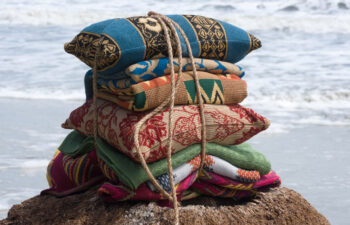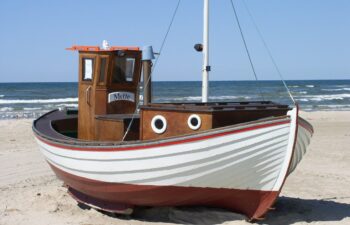
More than four months into the pandemic, and in some ways, the future seems even hazier than it was in March: some people are itching to dust off their passports, while others are still hesitant to leave the house. No one is sure what the next few months might look like — but it’s safe to say that, for lots of people, those wanderlust daydreams of swimming in the Caribbean or strolling by the Eiffel Tower are probably on hold for a while.
For now, and probably for a while, “travel” looks very different from what we knew back in the Before. Sky miles and jet lag are, for now, replaced by road trips and regional exploring. Since few kids have the option to go to Grandma’s (or summer camp) while Mom and Dad enjoy a romantic gondola ride in Venice, vacations are now family-oriented by necessity. Speaking of Mom and Dad, they’re probably working remotely in between rest stops and beach days, which means they can’t go too far without Wi-Fi and a power outlet.
So, what does this mean for the industry? In terms of how things might change, here’s what I have gathered from all those webinars we’ve listened to together: smart hotel operators will focus on making their guest rooms as hospitable, welcoming, and safe as possible, because right now, the days of lounging around a hotel lobby — no matter how well-appointed or attractive — are over. In the post-COVID travel economy, it’s no longer about a hotel’s bells and whistles: safe, comfortable guest rooms are the bells and whistles.
Maybe this means that hotel gyms are replaced by a Peloton in every room. Maybe, as we learn more about surface transmission, hotel designers spend more time thinking strategically about making sure textiles and other surfaces hold up to rigorous daily cleaning. (Perhaps this is where I mention that Studio Twist’s textiles are made to be laundered at 140 degrees?) Maybe this even reshapes architecture, with future hotels sporting open-air outdoor corridors rather than interior hallways.
Hotels will need to find ways to educate their guests about what they’re doing to keep travelers safe and healthy. And no, this doesn’t just mean putting up signage about your cleaning practices: this will require real change, clear communication, and authenticity, not just the proverbial window dressing. Even for intrepid tourists, it might take a long time before we’re all sharing elevators or sitting shoulder-to-shoulder at the lobby bar without a tiny bit of worry or doubt in the back of our minds.
Maybe most importantly: with time, we will go back to doing some things the way we did them before. It might not be next week, or next month, or even this year, but one day soon, travelers will be able to dust off their Sky Miles, and the hospitality industry will be there to welcome them with virtual hugs.
Everything feels scary right now, and none of us will ever forget what it was like to live through this — but it’s crucial to remember that humans are resilient. And all of this effort we’ve put i (and will continue putting in) to make our world feel safer will benefit all of us. These benefits will stick around long after the toilet paper reappears on shelves and the pandemic subsides.
Fortunately, the Eiffel Tower will still be there.




